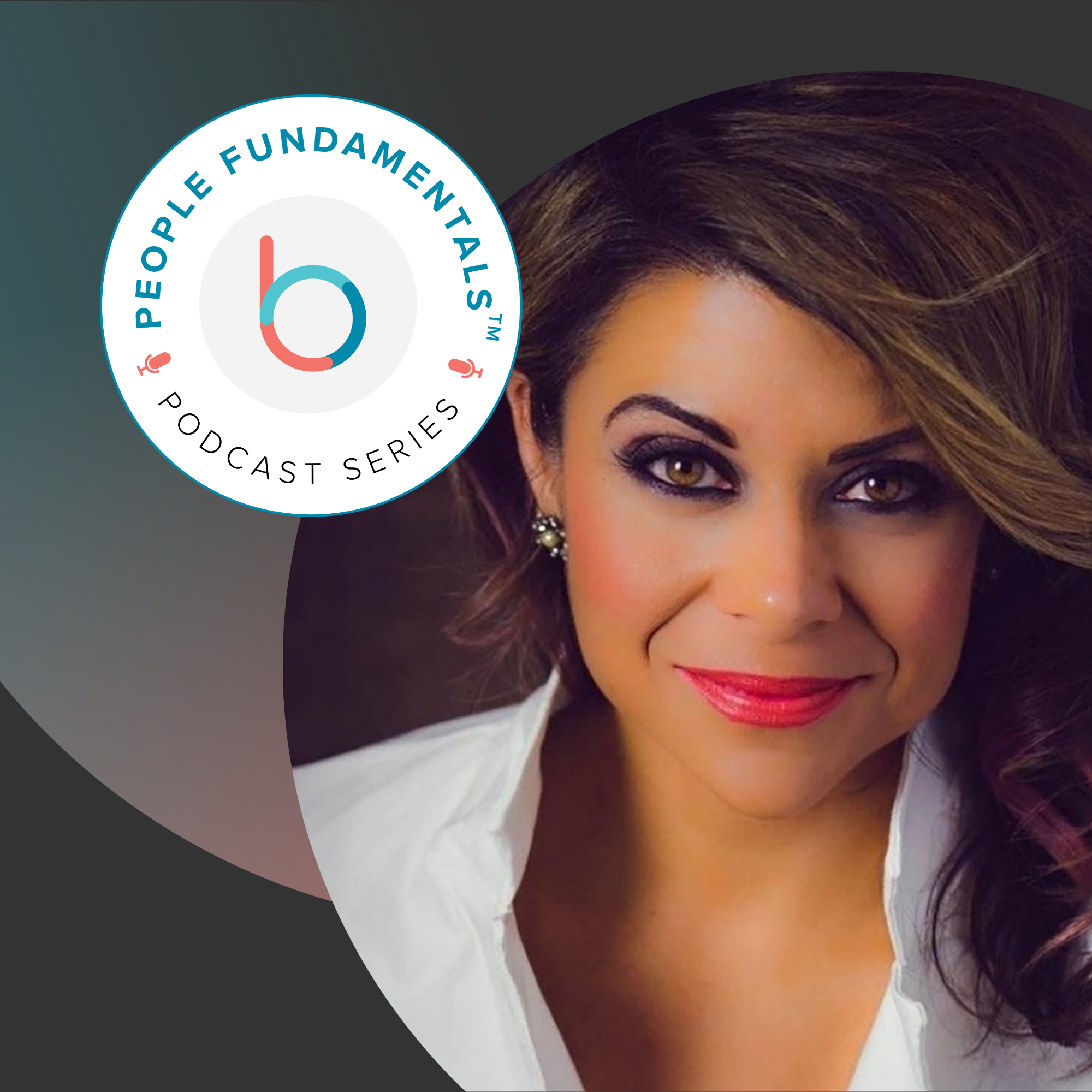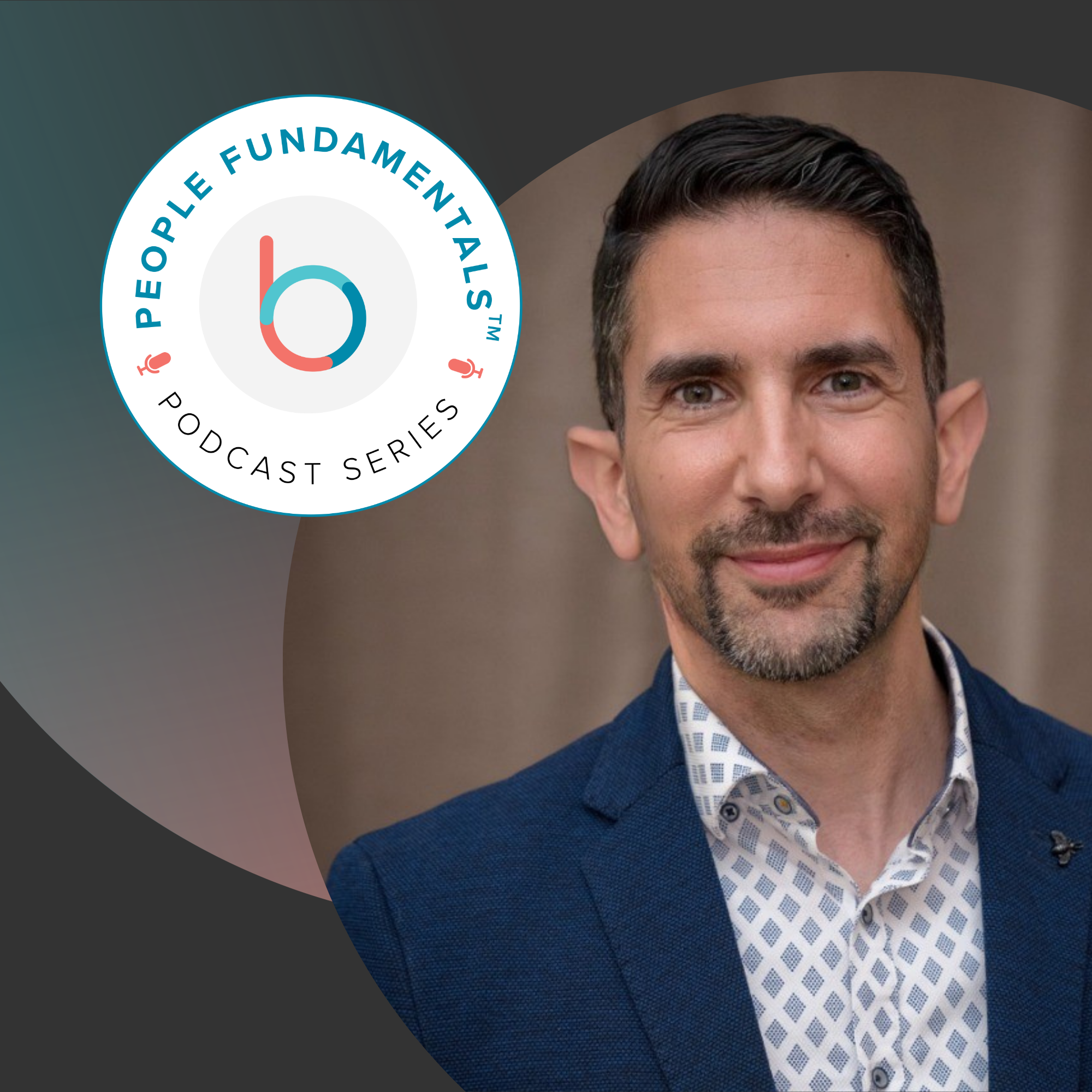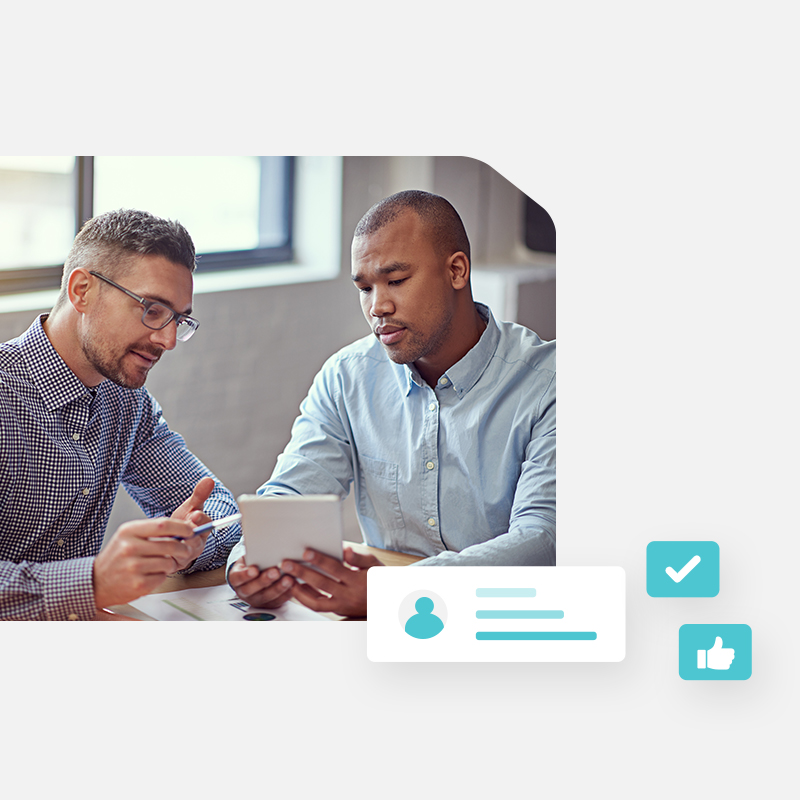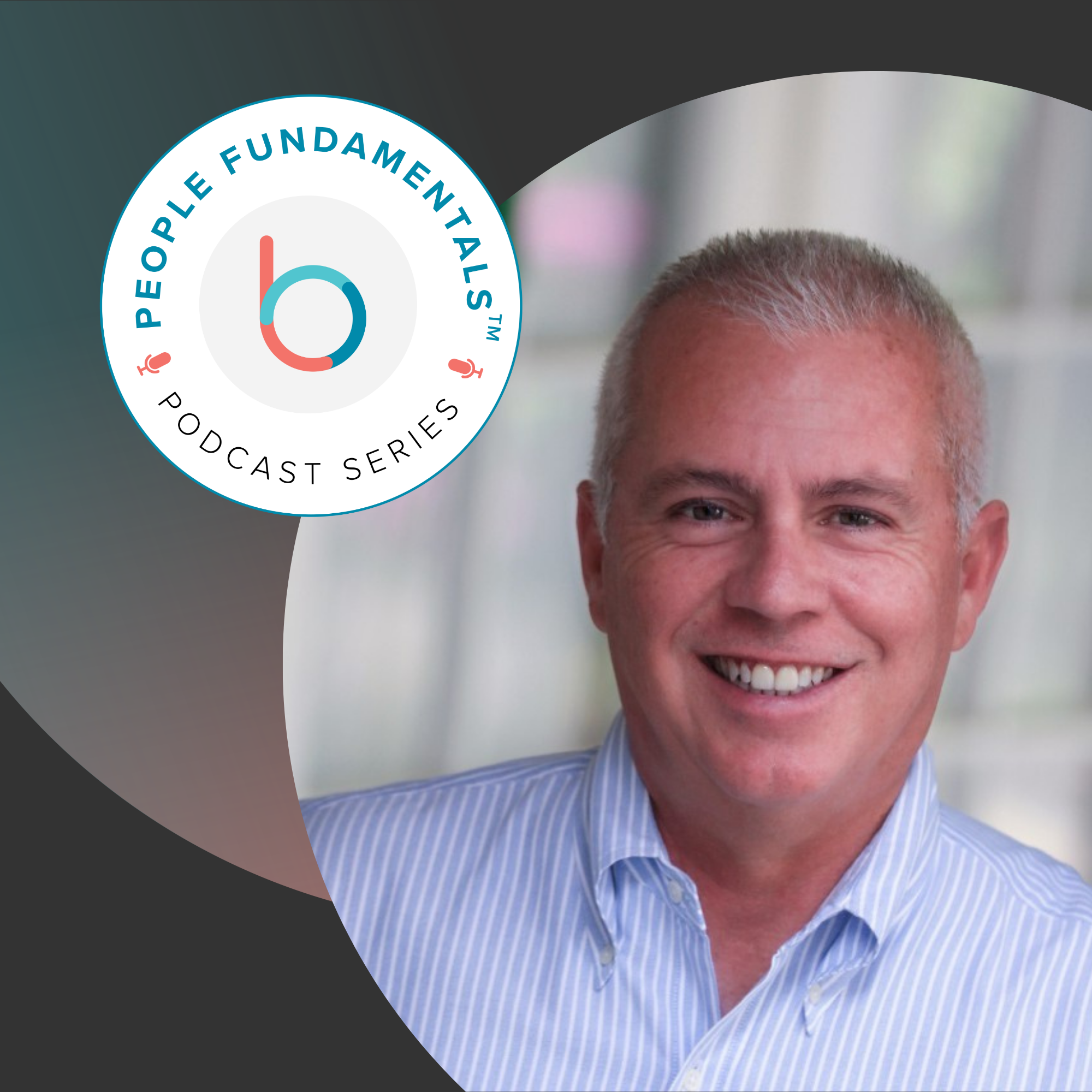A great customer experience differentiates your brand, builds customer loyalty, and drives ongoing business results. But you can’t deliver a stellar customer experience without first investing in your employee experience.
“If you have teams who are not connected, if you have leaders who are not visionary enough, if you have processes that are really preventing people from doing their best work, then it’s incredibly difficult to deliver to your customers,” says Jeannie Walters, customer experience expert and CEO at Experience Investigators. She’s also speaking at the upcoming People Fundamentals webinar session “Elevating Everyone: Unifying EX and CX for Better Business Performance.”
Here’s a taste of what Jeannie’s webinar covers.
Connecting the dots between customer and employee experiences requires big-picture, strategic thinking from HR leaders — a mindset shift that Jeannie urges HR leaders to prioritize. “Think about how important your role is to customers, to the outcomes of the organization,” she says, “because by providing those meaningful experiences inside the organization, we’re going to have more meaningful experiences to deliver to customers.”
We talked with Jeannie ahead of her People Fundamentals session about connecting employee and customer experiences and why that connection drives business results.
Align customer and employee experiences
The strongest brands deliver the same standard of experience to employees as they do to customers. The secret to elevating both is to think of them as related elements rather than separate journeys. Start by aligning your customer promise with your values as an employer.
“A lot of employees today are saying that they want to work with organizations that align with their values,” Jeannie says. “And if one of your values is delivering great things for your customers, but you’re not doing that for your employees, they feel that misalignment.”
Reinforce the customer experience across the employee experience journey. Build it into your employer brand messaging to encourage a customer-centric culture — and recruit people who share those values. “A lot of organizations have strong missions around customer experience, but they don’t necessarily share that in the hiring process,” Jeannie says. “By sharing that from the beginning, you’ll have that alignment. You’ll attract the people who want to be there, who want to deliver on that mission for you.”
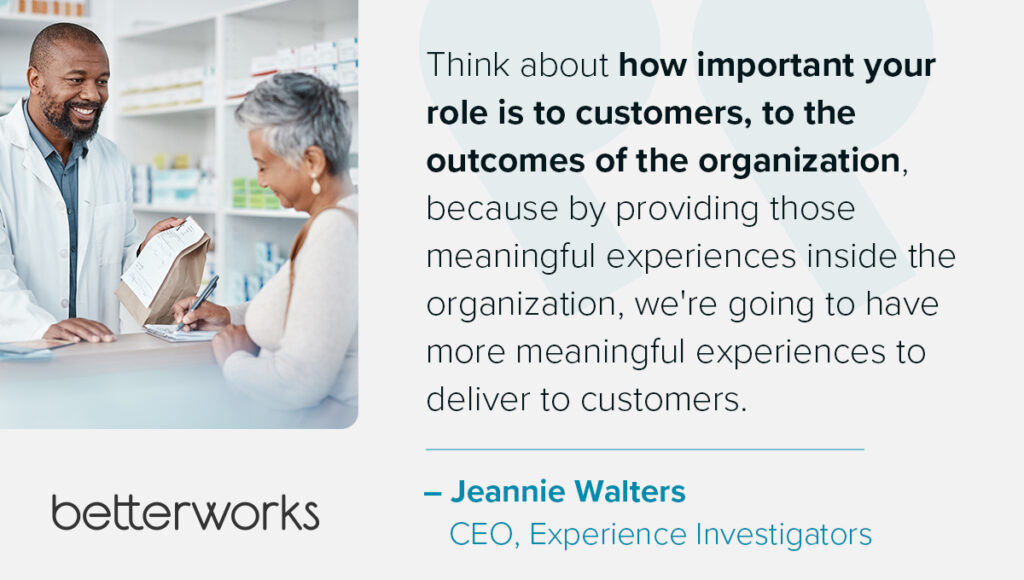
Apply a customer service model to employee experience
Most businesses have processes for consistently delivering customer experiences that align with the brand’s mission, vision, and values. You can use the same tools to standardize the employee experience. “Make sure that we’re using the best practices that we’ve learned in customer experience and applying that to employee experience,” Jeannie says.
When you think of employees as your customers, you can work with your customer service team to apply customer journey mapping and other tools to the employee experience. This approach creates a more cohesive experience for employees and even candidates. “When we connect those types of dots, we really do deliver for everyone across the organization and to the customers that we’re serving,” Jeannie says. “And then it becomes this winning cycle where customers come back to us.”
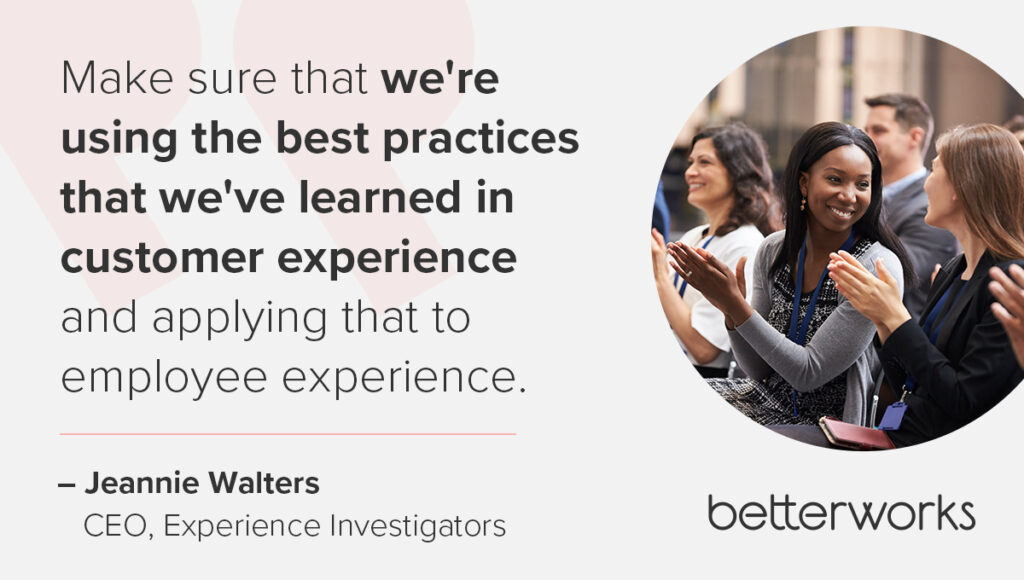
Empower employees to deliver excellent service
Purpose is crucial to the employee experience, and it supports a better customer experience. Help each employee understand how their role — even if it isn’t customer-facing — affects the customer experience.
“Employees want that sense of meaning and purpose,” Jeannie says. “When we can show them that their work has a direct impact on really helping somebody achieve a goal, helping a business do better … that can provide that meaning for employees.”
Enrich employee purpose and experience even more by empowering employees to be proactive in customer service. If your staff notices processes that aren’t working for customers, for example, “do they have a way to share that information, and are they empowered to do that?” Jeannie says. “Because that will not just innovate around the customer journey, but it will also improve efficiency in the employee journey.”
As HR leaders, you set the tone for unifying employee and customer experiences — and it’s up to you to communicate that imperative to other business leaders. “We want leaders who care about customer experience. We want leaders who can innovate around these big ideas,” Jeannie says. “By really helping connect those dots, you’re developing stronger leaders who are able to deliver longer term — and get better results for the company.”
To learn more about Jeannie’s strategies for unifying customer and employee experiences for better business performance, register for the webinar.
Align Your CX and EX

